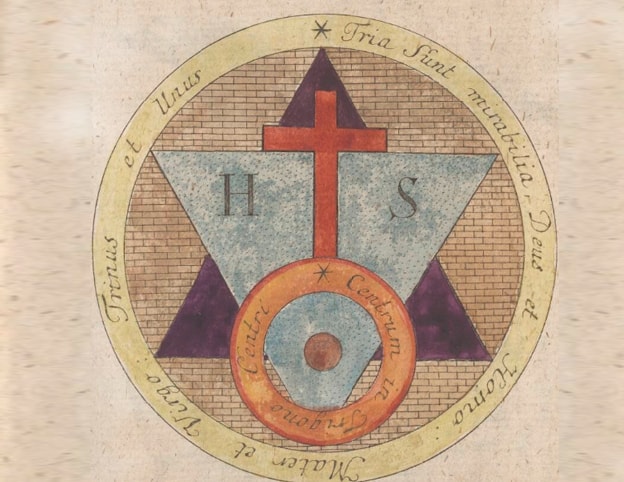 Submitted by Heindel on
Submitted by Heindel on

The pigpen cipher (sometimes referred to as the masonic cipher, Freemason's cipher, Rosicrucian cipher, or Tic-tac-toe cipher)is a geometric simple substitution cipher which exchanges letters for symbols which are fragments of a grid. The example key shows one way the letters can be assigned to the grid. It was first published in 1531 by both the Rosicrucian brotherhood and the Freemasons.
The exact origin of the cipher is uncertain, but records of this system have been found which go back to at least the 18th century. Variations of this cipher were used by both the Rosicrucian brotherhood and the Freemasons, though the latter used it so often that the system is frequently called the Freemason's cipher. They began using it in the early 18th century to keep their records of history and rites private, and for correspondence between lodge leaders. Tombstones of Freemasons can also be found which use the system as part of the engravings. One of the earliest stones in Trinity Church Cemetery in New York City, which opened in 1697, contains a cipher of this type which deciphers to "Remember death". (Cf. "memento mori".) George Washington's army had documentation about the system, with a much more randomized form of the alphabet. And during the American Civil War, the system was used by Union prisoners in Confederate prisons.
X Marks The Spot -
The core elements of this system are the grid and dots. Some systems use the X's, but even these can be rearranged. One commonly used method orders the symbols as shown in the above image: grid, grid, X, X. Another commonly used system orders the symbols as grid, X, grid, X. Another is grid, grid, grid, with each cell having a letter of the alphabet, and the last one having an "&" character. Letters from the first grid have no dot, letters from the second each have one dot, and letters from the third each have two dots. Another variation of this last one is called the Newark Cipher, which instead of dots uses one to three short lines which may be projecting in any length or orientation. This gives the illusion of a larger number of different characters than actually exist.]
Another system, used by the Rosicrucians, used a single grid of nine cells, and 1 to 3 dots in each cell or "pen". So ABC would be in the top left pen, followed by DEF and GHI on the first line, then groups of JKL MNO PQR on the second, and STU VWX YZ on the third. When enciphered, the location of the dot in each symbol (left, center, or right), would indicate which letter in that pen was represented.More difficult systems use a non-standard form of the alphabet, such as writing it backwards in the grid, up and down in the columns, or a completely randomized set of letters.
The cipher uses a geometric simple substitution. First draw two grids (tic tac toe style) and two X’s. Write each letter of the alphabet in the blank spaces as shown. Add dots to the second grid and X to distinguish the two.

https://bookunitsteacher.com/wp/?p=5914
To use the code, swap out the shape the letter sits in for the letter. The chart below shows the shapes of the letters.

https://bookunitsteacher.com/wp/?p=5914
http://self.gutenberg.org/articles/rosicrucian_cipher
For the Secret History of the Rosicrucians go here: http://ciphermysteries.com/secret-history-of-the-rosicrucians
- 1402 reads